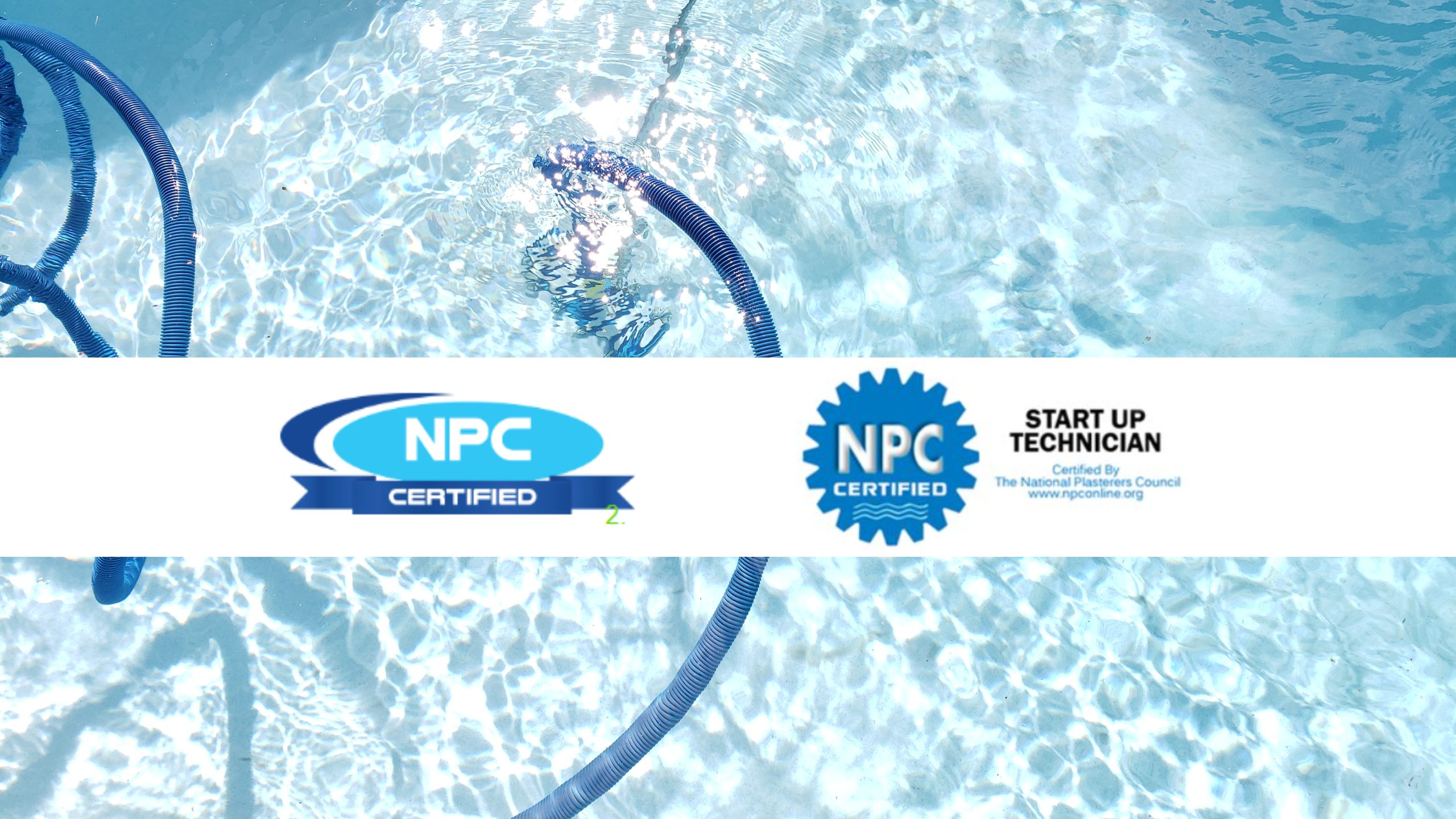Our estimates are free, professional and fair.

The pool interior finish is especially susceptible to staining, scaling, and discoloration within the first 28 days.
Initial start-up procedures include frequent brushing and daily testing and adjusting of the pool water.
The following recommended start-up procedures are based on common trade practice and methods shown to produce the best aesthetic results and longevity of the interior finish.
Due to uniqueness of the fill water or other environmental factors, some portions of the start-up procedures may need to be modified to protect the pool finish.
For example; filling the pool with water having extremely high/low calcium hardness, high/low pH, or high/low total alkalinity may necessitate changes to these procedures.
Maintaining the proper initial and ongoing pool water chemistry, brushing the surface, a good pool cleaning system, and regular equipment maintenance are vital to achieve the anticipated lifespan of the finish.
Step #1. Test fill water for pH, total alkalinity (TA), and calcium hardness (CH). Record test results.
Step #2. High alkalinity should be adjusted downward to 80 ppm – 100 ppm using pre-diluted muriatic acid (31-33% hydrochloric acid). Always pre-dilute the acid by adding it to a five gallon (19 L) bucket of water.
Step #3. Low alkalinity should be adjusted upward to 80 ppm using sodium bicarbonate (baking soda).
Step #4. pH should be reduced to 7.2 – 7.6 adding pre-diluted muriatic acid (after the alkalinity is in range 80 ppm – 100 ppm).
Step #5. Low calcium hardness should be adjusted upward to 80 ppm – 100 ppm. Adjustments of hardness increaser (calcium chloride) should be dissolved and added in 10 lb. increments, with each dosage separated by several hours. Never add hardness increaser (calcium chloride) and alkalinity increaser (sodium bicarbonate) at the same time.
Step #6. Brush the entire pool surface thoroughly at least twice daily to remove all plaster dust. Wheeled vacuums or wheeled pool cleaners should not be used in the pool until after 28 days (brush vacuums or non-wheeled pool cleaners are allowed).
Step #7. Although optional, it is recommended by many to add a sequestering agent, following the manufacturer’s recommended initial start-up dosage, and when used, to continue dosing at the recommended maintenance dosage thereafter.
Step #8. Continuous operation of the pumps and filtration system is mandatory for 7-seven days, or until the plaster dust has been brushed away and filtered out, and the water is no longer cloudy. (minimum of 72 hours)
Step # 9. DO NOT add chlorine for 48 hours. DO NOT turn on pool heater until there is no plaster dust in the pool.
Step #1. Test pool water for pH, total alkalinity (TA), calcium hardness (CH) and repeat steps of DAY 1, except for Step #7.
Step #2. Once the total alkalinity (TA) is adjusted to 80 ppm – 100 ppm and the pH is adjusted to 7.2 – 7.6, then adjust calcium hardness (CH) upward to 100 ppm – 150 ppm. Adjustments of hardness increaser (calcium chloride) should be dissolved and added in 10 lb. increments, with each dosage separated by r several hours. Never add hardness increaser (calcium chloride) and alkalinity increaser (sodium bicarbonate) at the same time.
Step #1. Test and adjust pH, total alkalinity (TA) and calcium hardness (CH) as per DAY 2 Step #2, and repeat Steps #6 and #8 of DAY 1.
Step #2. Add pre-diluted chlorine or liquid chlorine to 1.5 ppm 3.0 ppm level (IMPORTANT: For salt water (SWCG) pools, do not add salt within the first least 30 days).
Step #3. Brush the entire pool surface thoroughly at least twice daily to remove all plaster dust.
Step #1. Test and adjust pH and total alkalinity (TA) maintaining ranges of DAY 2 Step # 2, and repeat Steps #6 and #8 of DAY 1 each day for 7-seven days to help prevent the scaling of the pool surface.
Step #2. In-floors and directional eyeballs may be added once water chemistry is balanced.
Step #1. Calcium hardness (CH) should be increased slowly (if necessary) to a minimum of 200 ppm.
Step #2. Begin adjusting the cyanuric acid (CYA) to 30ppm – 50 ppm. Add CYA through the skimmer while the pumps and filtration system are running for a minimum of 3-three days. After each addition brush the entirety of the interior finish. Concentrated CYA can cause pigmented finishes to discolor.
If there is any plaster dust remaining, remove it using a brush pool vacuum.
Once plaster dust is removed, and with a good pool cleaning system in place, brushing can be limited to the removal of visually observed material (leaves, dirt, etc.) or when adding chemicals.